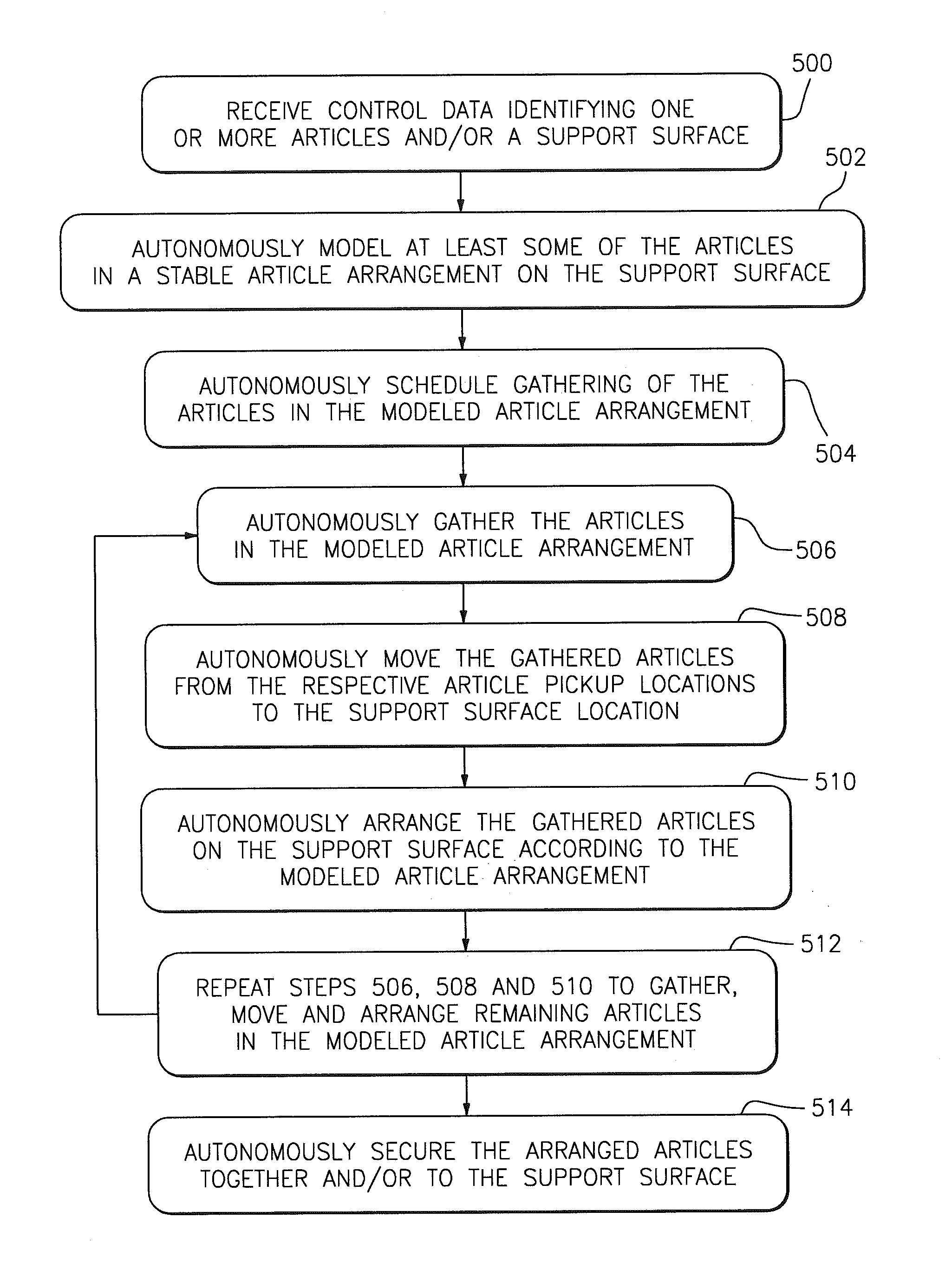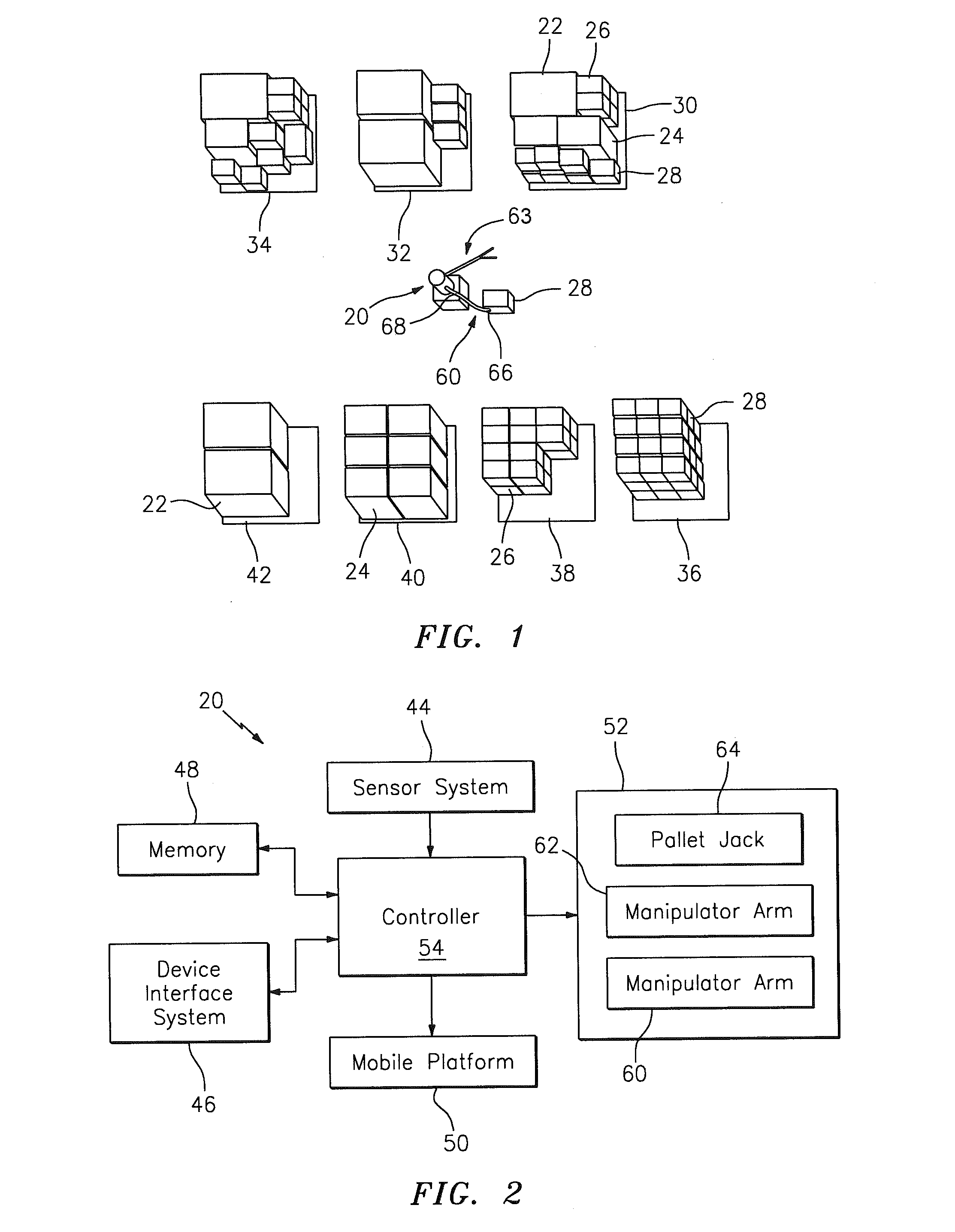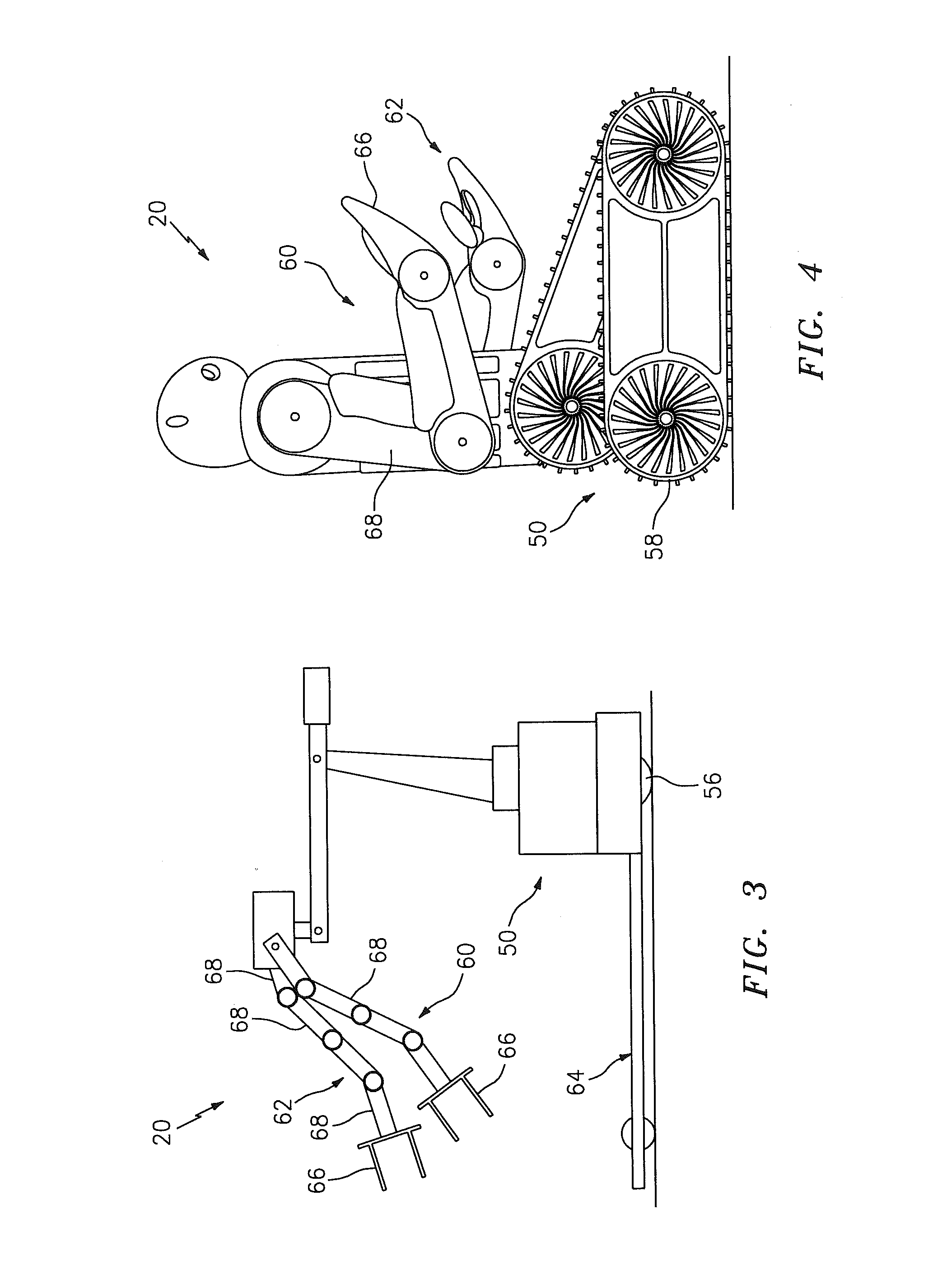Loading articles on one or more support surfaces with one or more mobile devices
a mobile device and support surface technology, applied in the field of articles handling and monitoring, can solve the problems of serious safety hazards in the work environment, errors and injuries of workers, and time-consuming and labor-intensive problems
- Summary
- Abstract
- Description
- Claims
- Application Information
AI Technical Summary
Benefits of technology
Problems solved by technology
Method used
Image
Examples
Embodiment Construction
[0027]Autonomous devices, systems and / or methods may perform one or more tasks without continuous outside control and / or intervention. An autonomous mobile robot, for example, may receive instructions to perform a certain task at a certain location. The mobile robot may subsequently determine and perform the operation(s) necessary to move to the location and / or complete the task based on, for example, its current location, surrounding obstacles, its operating environment, the type of task to be performed, etc. Such autonomous devices, systems and / or methods may also adapt to unknown, new and / or changing operating environments without additional outside control and / or intervention.
[0028]Autonomous devices, systems and / or methods may be fully autonomous or semi-autonomous. The term “fully autonomous” is used to describe a device, system and / or method that may perform one or more tasks without, for example, any outside control and / or intervention. A fully autonomous mobile robot, for e...
PUM
 Login to View More
Login to View More Abstract
Description
Claims
Application Information
 Login to View More
Login to View More - R&D
- Intellectual Property
- Life Sciences
- Materials
- Tech Scout
- Unparalleled Data Quality
- Higher Quality Content
- 60% Fewer Hallucinations
Browse by: Latest US Patents, China's latest patents, Technical Efficacy Thesaurus, Application Domain, Technology Topic, Popular Technical Reports.
© 2025 PatSnap. All rights reserved.Legal|Privacy policy|Modern Slavery Act Transparency Statement|Sitemap|About US| Contact US: help@patsnap.com



